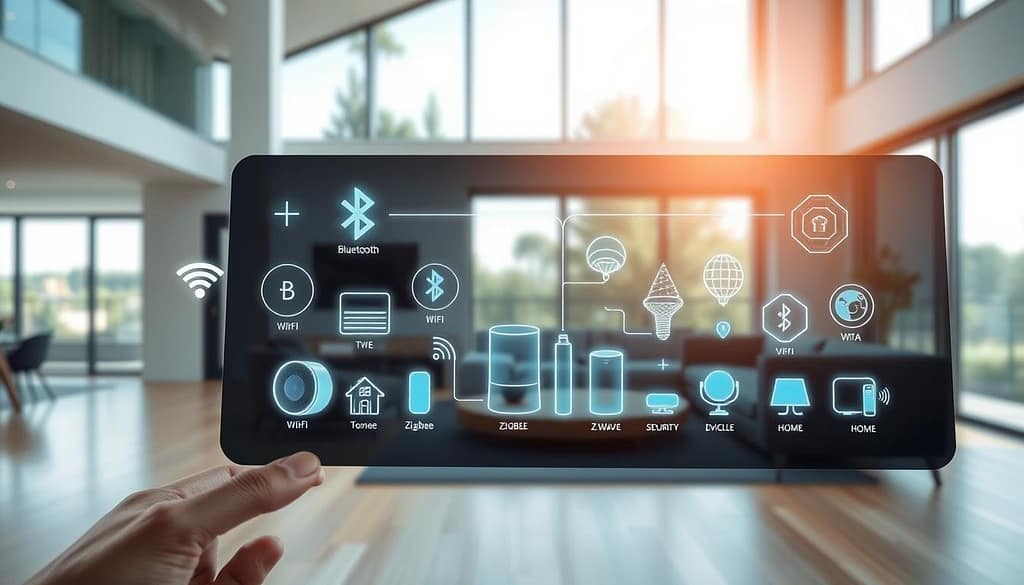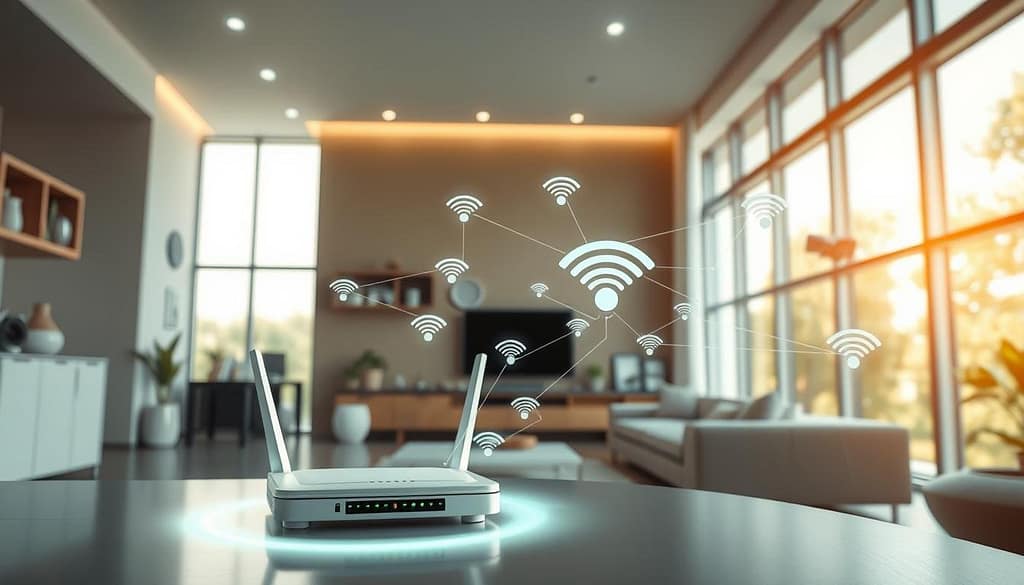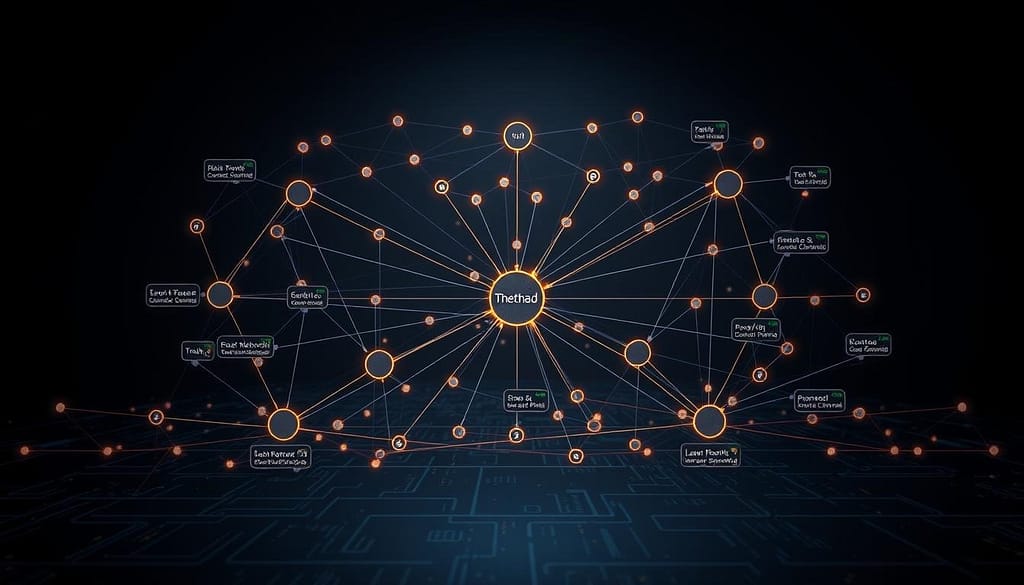Creating a smart home begins with understanding how devices communicate. At the center of this interaction is the smart home connectivity protocols, which serve as the digital language enabling seamless integration between devices.
From wireless signals to data protocols, these underlying systems enable everyday tasks like turning on lights or adjusting your thermostat to occur seamlessly. They form the backbone of automation, ensuring efficient and reliable operation.
Major tech brands such as Google, Amazon, Apple, and Samsung offer a wide range of connected devices—but each brand may rely on different communication methods. While this diversity encourages innovation, it can also create barriers to achieving a fully integrated smart home if the technologies don’t align.
A solid foundation begins with choosing the right smart home connectivity protocol—the digital infrastructure that allows thermostats, cameras, and lighting systems to work together. Selecting compatible systems from the start can reduce setup complexity and help your devices perform as one cohesive unit.
The market is filled with thousands of connected devices, each offering unique features and benefits. However, they often use different technologies for interaction—whether it’s a smart home connectivity standard like Zigbee or a general-purpose wireless protocol like Wi-Fi. This variety creates a challenge for homeowners trying to establish a unified system.
Choosing the right communication system is critical for your smart home’s performance. To fully appreciate each option’s role, it’s important to explore how different technologies align with specific use cases and device needs. The wrong choice can result in devices that won’t connect, apps that crash, and systems that frustrate you. Some technologies are better suited for battery-powered sensors, while others excel at streaming video from security cameras.
This guide explores each major networking method’s strengths and weaknesses. You’ll discover which standards fit your specific needs and budget. Understanding these technologies helps you avoid costly errors and build a reliable smart home.
Table of Contents
- 1 Understanding Smart Home Communication Standard
- 2 Wi-Fi: The Universal Standard of Smart Home Connectivity Protocols
- 3 Zigbee: The Low-Power Mesh Network
- 4 Z-Wave: The Reliable Home Automation Protocol
- 5 Bluetooth and Bluetooth LE
- 6 Thread: The Future of Smart Home Networking
- 7 KNX and Insteon: Professional-Grade Solutions
- 8 Matter: The Universal Standard
- 9 Conclusion
Key Takeaways
Communication systems determine which devices can work together in your home automation setup
Wi-Fi offers high speed but drains batteries faster than other methods
Zigbee and Z-Wave create mesh networks that extend range through multiple devices
Bluetooth works well for close-range connections and budget-friendly setups
Matter promises universal compatibility across major smart home brands
Mixing technologies requires careful planning to avoid compatibility issues
Understanding Smart Home Communication Standard
Setting up a smart home is thrilling until you hit a snag. Your new smart bulbs won’t sync with your security system. This issue arises from the use of different communication technologies. These networking methods act as languages for devices to communicate.
What Are Communication Protocols?
Communication protocols are sets of rules for devices to send and receive data. Just as humans need a common language, smart devices require shared standards to interact. Some systems, like Wi-Fi and Bluetooth, only transmit data. Others, like Zigbee, control devices with specific commands, such as turning lights on or adjusting thermostats.
Why Protocol Selection Matters for Your Smart Home
The choice of communication technology significantly impacts your smart home. It determines device compatibility, response speed, and energy usage. A home with mixed protocols might require multiple apps for control. This leads to frustration when managing different ecosystems.
The Challenge of Device Compatibility
Device compatibility is a major challenge for smart home owners. Popular brands often employ different protocols:
| Brand | Common Protocol | Device Types |
|---|---|---|
| Philips Hue | Zigbee | Smart Bulbs |
| August | Wi-Fi/Bluetooth | Smart Locks |
| Nest | Wi-Fi | Thermostats |
| SmartThings | Zigbee/Z-Wave | Sensors |
Without proper planning, you might face isolated systems that won’t integrate. The choice of communication method decides whether devices form a unified system or remain separate.
Wi-Fi: The Universal Standard of Smart Home Connectivity Protocols
Wi-Fi is the most widely used home communication protocol today. Introduced in 1998, it has grown to support countless connected devices. It operates on both 2.4GHz and 5GHz frequencies, meeting the needs of many smart home applications with its flexibility and performance.
Advantages of Wi-Fi for Smart Homes
Wi-Fi’s main advantage is its widespread availability. Most homes already have routers and wireless networks set up, making it easy to connect devices. This allows for direct internet access without the need for extra hubs or bridges. It also enables remote control from anywhere in the world, in real-time.
Wi-Fi 6E technology offers enhanced capabilities for smart homes. It operates on the 6GHz band, providing faster speeds, improved security, and better handling of multiple devices. These features make it perfect for applications that require a lot of bandwidth, such as security cameras and video doorbells.
Limitations and Power Consumption
Despite its widespread use, Wi-Fi poses challenges for battery-powered devices. It requires a lot of energy to maintain connections, leading to frequent battery replacements in devices like sensors and locks. Manufacturers face difficulties in standardization, as Wi-Fi only defines communication methods, not device control standards.
Best Use Cases for Wi-Fi Devices
| Device Type | Power Source | Ideal Application |
|---|---|---|
| Security Cameras | Wired | 24/7 video streaming |
| Smart Speakers | Wired | Voice control and music |
| Smart TVs | Wired | 4K content streaming |
| Smart Plugs | Outlet-powered | Remote appliance control |
When choosing between technologies, Wi-Fi is best for devices needing constant power and high data throughput. Cameras, entertainment systems, and kitchen appliances benefit most from its robust capabilities.
Zigbee: The Low-Power Mesh Network
Zigbee has emerged as a key player in the realm of smart home communication, introduced in 2004. It offers a unique blend of energy efficiency and scalability, making it a cornerstone for robust smart home systems. This open protocol has transformed home automation, catering to those who value both power savings and the ability to expand their systems.
How Zigbee Mesh Networking Works
The mesh network of Zigbee forms a self-healing web, where each powered device acts as a repeater. This ensures messages can traverse through multiple nodes, guaranteeing delivery even if one path is disrupted. Theoretically, it supports up to 64,000 devices, making it perfect for large-scale smart home setups.
Popular Zigbee Devices and Hubs
The Zigbee ecosystem boasts a wide array of compatible devices and hubs:
| Hub Type | Compatible Models | Key Features |
|---|---|---|
| Samsung SmartThings | SmartThings Hub v3 | Wide device support, automation rules |
| Amazon Echo | Echo Plus, Echo Show 10 | Voice control, built-in hub |
| Google Home | Nest Hub Max | Display interface, Google Assistant |
| Philips Hue | Hue Bridge | Lighting focus, reliable performance |
Compatibility Considerations
Despite Zigbee’s open nature, compatibility can be a hurdle. Manufacturers may interpret specifications differently, leading to communication issues between devices. It’s essential for smart home enthusiasts to check compatibility before making a purchase, ensuring seamless integration across brands. Despite these challenges, Zigbee’s widespread use offers a broad range of products at competitive prices, facilitating the creation of extensive mesh networks.
Z-Wave: The Reliable Home Automation Protocol
Created by Zensys in 1999, Z-Wave has become a cornerstone in home automation. It powers millions of smart devices globally, including door locks, thermostats, and security sensors. This wireless standard is renowned for its dependability.
Z-Wave’s reliability and compatibility are unmatched. Devices with the “Works with Z-Wave” logo undergo strict testing by the Z-Wave Alliance. This ensures that your new smart switch will integrate flawlessly with your existing Z-Wave hub, regardless of the manufacturer.
The protocol operates on the 908.42 MHz frequency in the United States. This frequency is less crowded than the 2.4 GHz band used by Wi-Fi and Bluetooth. It reduces interference and enhances connection stability. Each Z-Wave device acts as a repeater, forming a mesh network that boosts coverage in your home.
| Feature | Z-Wave | Z-Wave Plus |
|---|---|---|
| Range | 100 feet | 150+ feet |
| Battery Life | 1 year | 2+ years |
| Data Rate | 40 kbps | 100 kbps |
| Network Size | 232 devices | 232 devices |
Z-Wave Plus introduced substantial enhancements while ensuring backward compatibility. Devices using Z-Wave Plus use 50% less power and offer 67% more range than earlier models. This upgrade is ideal for battery-powered devices like motion sensors and smart locks.
Bluetooth and Bluetooth LE
Bluetooth is a key home automation protocol, making it easy for homeowners to begin their automation journey. Developed by the Bluetooth Special Interest Group in 1989, it has grown from simple connections to support many smart devices. This evolution has made it a versatile choice for various applications.
Short-Range Communication Benefits
Bluetooth shines in close-range scenarios. For instance, smart locks only need to communicate when you’re near your door. Fitness trackers and wearables use Bluetooth LE to connect with smartphones, lasting weeks on a single charge. Its direct connection method simplifies setup, making it ideal for beginners.
This post contains affiliate links, and we may earn a commission if you purchase through them.
Budget-Friendly Smart Home Options
For those watching their budget, Bluetooth is a great choice. It’s used in smart bulbs, portable speakers, and basic sensors, often at 30-50% less than Zigbee or Z-Wave options.
- Wyze Smart Lock at $89
- Govee LED Strip Lights starting at $15
- SwitchBot Smart Curtains under $70
- August Smart Lock Pro around $150
Range Limitations and Solutions
The 30-foot range can be a challenge in larger homes. Devices lose functionality beyond this distance without careful planning. Range extenders and Bluetooth LE repeaters help fill these gaps. Some products now include mesh networking, but it’s not yet widespread.
Thread: The Future of Smart Home Networking
Building upon the mesh networking concept seen in Zigbee and Z-Wave, Thread offers a next-generation alternative that enhances speed, security, and power efficiency. Unlike older protocols, Thread is based on IPv6 and was designed to overcome interoperability and scalability limitations. It forms self-healing mesh networks, where each device acts as a node that communicates directly with others.
This approach ensures not only stronger coverage but also greater reliability across a growing ecosystem of low-power smart devices. While its adoption is still expanding, Thread’s integration with Matter positions it as a forward-looking solution that addresses the shortcomings of earlier mesh-based systems.
Thread is a groundbreaking solution in connected home communication. Introduced in 2014, it leverages IPv6 for modern network infrastructure. Thread creates self-healing mesh networks where devices communicate directly, ensuring strong coverage and energy efficiency.
| Feature | Thread Protocol | Traditional Protocols |
|---|---|---|
| Network Type | IPv6-based wireless protocol | Proprietary standards |
| Power Usage | Ultra-low consumption | Variable efficiency |
| Device Limit | 250+ devices | 50-100 devices |
| Security | Bank-grade encryption | Basic encryption |
Battery-powered devices benefit from Thread’s ultra-low power design, and the protocol supports over 250 devices with high security. Though adoption is limited to select hubs and brands, integration with Matter is expected to expand its reach.
KNX and Insteon: Professional-Grade Solutions
For a sophisticated smart home, professional home automation technologies are essential. KNX and Insteon offer enterprise-grade performance and integration across larger properties.
KNX allows communication over twisted pair, RF, or IP networks, offering unmatched flexibility. Insteon uses dual-band communication over powerlines and RF, ensuring message delivery through multiple channels.
These systems often require professional installation and are ideal for larger or more complex installations, particularly in new builds or renovations.
Choosing the Right Communication Technology
Choosing the right method for device interaction begins with understanding your unique needs. A smart controller hub serves as the brain, linking sensors and issuing commands. Options like Home Assistant, Hubitat, and SmartThings support multiple standards, offering flexibility for future expansion.
Avoiding Protocol Fragmentation
Mixing incompatible systems can cause fragmentation, complicating device management. Stick with one or two complementary technologies. Beginners should favor platforms with wide support and intuitive setup.
Matter: The Universal Standard
Matter is a revolutionary standard backed by Apple, Google, Amazon, and Samsung. Its purpose is to unify smart devices under one communication framework, allowing cross-brand integration.
With Matter, setup becomes easier, security improves, and compatibility headaches diminish. Products from Philips Hue, Nanoleaf, and Nest are incorporating Matter, making smart home adoption smoother for everyone.
Conclusion
Reliable communication systems are the foundation of smart home success. Whether it’s Wi-Fi for high bandwidth, Zigbee or Z-Wave for low-power mesh networking, or Matter for future-proof integration, choosing the right communication method empowers seamless device interaction.
A balanced, well-researched approach—one that values protocol diversity while maintaining compatibility—ensures your smart home remains adaptable and future-ready. Choose systems that meet your current needs, offer room for expansion, and support long-term performance across your entire connected ecosystem.
What is the role of a smart home connectivity protocol?
A smart home connectivity protocol defines how devices communicate within a home automation system. It ensures that smart bulbs, thermostats, cameras, and sensors can exchange data and commands seamlessly.
Which communication methods are best for battery-powered devices?
Low-power protocols like Zigbee, Z-Wave, Thread, and Bluetooth LE are ideal for battery-operated gadgets. These standards minimize energy usage while maintaining reliable performance.
Can I mix different smart home technologies in one system?
Yes, many smart home hubs support multiple communication methods. However, it’s important to plan carefully to avoid compatibility issues. Using hubs like SmartThings or Home Assistant can help bridge devices across different platforms.
Is Wi-Fi a good choice for all smart home devices?
Wi-Fi works well for bandwidth-heavy devices like security cameras and smart TVs. But it consumes more power, making it less suitable for battery-powered sensors and locks.
How does mesh networking improve connectivity?
Mesh networks, used in Zigbee, Z-Wave, and Thread, allow devices to relay signals to one another. This extends range and improves reliability, especially in larger homes.
What makes Matter different from existing protocols?
Matter is designed to unify smart home ecosystems by enabling cross-brand compatibility. It works with existing IP-based networks and supports multiple device types across Apple, Google, Amazon, and other platforms.
Are professional-grade solutions like KNX or Insteon worth it?
For large or complex homes, systems like KNX or Insteon offer robust reliability and long-term flexibility. They’re typically used in new constructions or major renovations and require professional installation.
How do I choose the right communication method for my home?
Start by assessing your needs—consider factors like device range, power requirements, and future expansion. Then choose a home automation standard that aligns with those goals and offers strong device compatibility.
Whether it’s Wi-Fi for high bandwidth, Zigbee or Z-Wave for low-power mesh networking, or Matter for future-proof integration, choosing the right communication method empowers seamless device interaction.



